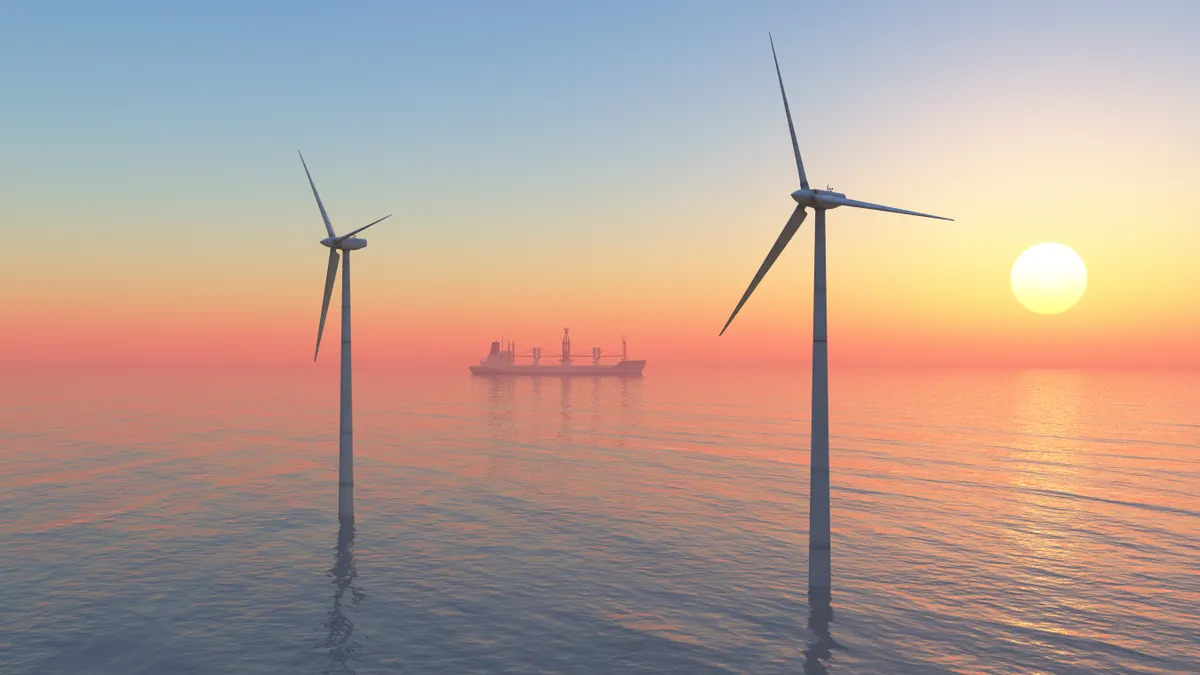Dive Brief:
- At this year’s International Offshore Wind Partnering Forum, companies inside and outside the energy sector are announcing plans to support offshore wind development with logistical and manufacturing innovations.
- Defense technology company Anduril Industries has contracted with the National Offshore Wind Research and Development Consortium to provide an autonomous undersea vehicle, the Dive-LD, for inspecting offshore wind transmission lines.
- US Wind is partnering with Spain’s Haizea Wind Group to operate a steel facility in Baltimore County, Maryland that will produce components for offshore wind farms, including monopiles and towers.
Dive Insight:
Anduril’s Dive-LD can also be used for “bathymetric and geophysical surveys [and] long-range oceanographic sensing,” says the company’s press release. These applications are increasingly in demand as the offshore wind industry grows and expands into deeper waters, necessitating data on topography and marine ecosystems to guide siting.
For instance, the Interior Department’s Bureau of Ocean Energy Management recently partnered with the National Oceanic and Atmospheric Administration to build a full ocean model of the Gulf of Mexico to analyze the ecosystem and find the areas of lowest environmental impact and least conflict with other ocean users.
“Technologies like the Dive-LD will be critical for controlling costs, reducing downtime, and addressing at-sea maintenance safely and efficiently,” said NOWRDC's Executive Director Lyndie Hice-Dunton in Anduril’s release. “What we demonstrate in this partnership will have implications for offshore assets across sectors.”
Maritime intelligence company Saildrone is joining Anduril in providing the offshore wind industry with autonomous vehicles that can assist in ocean analysis, announcing Tuesday that it will produce a mid-size class of uncrewed boats that are “specifically designed for near-shore ocean and lakebed mapping” as well as for providing surveillance and intelligence.
Austrian company Palfinger Marine announced last week that it plans to launch a new, offshore-wind focused prototype of its transfer system in the first quarter of 2024, designed to move people and cargo between boats and static offshore structures like wind turbines.
Though these vessels would be able to deliver workers and cargo to offshore wind farms, the industry is facing a shortage of vessels equipped to haul massive wind turbines out to sea to be installed, according to a February report by consulting firm McKinsey & Co.
Each of these companies is participating in this week’s International Offshore Wind Partnering Forum in Baltimore. IPF’s website says that this location was chosen because of Baltimore’s “central location and world-class harbor” along with the fact that Maryland, with 2 GW of offshore wind currently in deployment along with ongoing transmission buildout, “is poised to become a hub of manufacturing and logistical activity for U.S. offshore wind.”
Baltimore-based US Wind and Haizea Wind Group said in a release that their goal is for their planned Baltimore County steel facility, Sparrows Point Steel, “to be one of the largest offshore wind staging ports in the United States” and revitalize the former site of Bethlehem Steel, formerly one of the largest steel production facilities in the world.
“Once built, the facility will have significant marshalling and storage land, as well as considerable quayside access and an adjacent drydock, making it one of the most competitive offshore wind marshalling hubs on the East Coast,” the release said.














